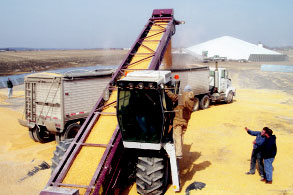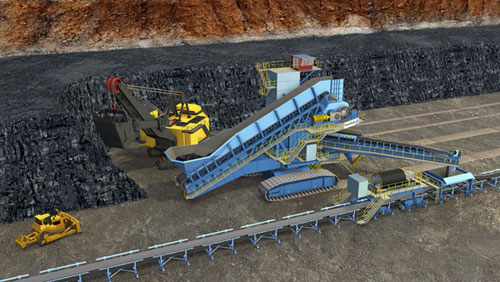Soils constitute part of vital environmental, ecological and agricultural resource that has to be protected. The determination of elemental status of cultivated lands is necessary to identify yield limiting deficiencies of essential micronutrients and polluted soils (Alloway, 1990). This is especially important in Ishiagu because the inhabitants are essentially farmers, and large quantities of yams, rice and okro are produced, not only for local consumption, but also for food supplies to other parts of Nigeria. Mining has also become important because of existence of Pb-Zn lodes in the area.
The study focuses on the heavy metals Pb, Zn, Cu, Cd, Ni and Co. The potential for these to constitute pollutants in the area is high. Availability of these metals and the presence of factors capable of mobilising, distributing and storing them in pedologic system are critical. The metals have been implicated in various disease conditions in many other areas. The detailed documentation of disease prevalence has not been carried out in the study area. There are, however, concerns about the potential harmful effects of these metals in soils in the area. The assessment of the metals in the area is thus critical because of the following:
- Pb, Zn, Cu, Cd, Ni, and Co form the major and minor elements of the Pb-Zn ores in the veins and lodes that abound in the area.
- The Asu River Shales and minor basic and intermediate intrusive form the bedrock of the study area. They form therefore the essential bulk materials for soil formation.
- The Asu River Shales are also enriched in trace metals . and mineralisation in the area. Some may have been absorbed from the ancient depositional environments .
Heavy metals in health and agriculture
Cadmium
This is a heavy metal of major environmental concern because of its high mobility and the small concentration at which it can adversely affect plants and animal metabolism. Furthermore it has adverse impact on soil biological activity . Cadmium is released as soluble Cd2+ ion during weathering. Under both acidic and alkaline conditions cadmium is adsorbed to surfaces of clay minerals, thereby reducing the mobility of the cadmium ions. Diet is the major source of cadmium intake because there is cadmium bio-accumulation in the food chain, especially in plants and seafood. Toxicity of cadmium results from cadmium substitution for zinc in enzymes . The critical toxic endpoint after ingestion is kidney damage , because of bioaccumulation in the liver and kidney. Cd poisoning may result in the Cd substitution for Ca in bones producing itai itai, a degenerate bone disease.
Lead
Lead has an average range in soils of 17–26 g/kg . It is the most immobile of all the common heavy metals. It is strongly sorbed by soils under neutral to basic conditions, being particularly attracted to sulphur groups in humans. Lead introduced at the soil’s surface will complex with organic matter causing lead to be bound in the soil within the top few centimetres, where organic matter content is highest . Lead poisoning has dominated the environmental agenda for several decades. Nonetheless, environmental lead remained a mere curiosity until the 1960s. Lead does not undergo biomagnifications in food chain and also not toxic to plants . Some of the known effects on higher plants include dark green leaves, stunted foliage and increased amounts of shoots . It is not known to be of any known function in the human body . The inorganic forms of lead in soil have the same toxic endpoints . The common symptom of lead poisoning is anaemia because lead interferes with the formation of haemoglobin. It prevents iron uptake . High levels of lead may produce permanent brain damage and kidney dysfunction. Over time lead will substitute Ca in bone which acts to store the lead. Then in old age the lead is reactivated by slow dissolution of the bone.
Nickel
Agricultural soils contain Ni at levels of 8.5 – 15 mg/kg. Nickel exists in several oxidation states, but the divalent ion seems to be the most important for both organic and inorganic species. In soils, nickel may be present in a variety of forms. These include forms that are very limited in solubility (sulphide and sulphates) to the more soluble carbonate forms. The major source of nickel for humans is food where nickel can be present from normal intake from the soil. Nickel is considered likely to be an essential micronutrient . Exposure to nickel toxicity produces a specific form of dermatitis and may include the lining and nasal cavity cancer.
Zinc
Zinc is an essential trace element for both animals and humans. It is usually present in the divalent state (Zn2+). Many rocks and minerals contain Zn in varying amounts. Sphalerite (ZnS) is the most important mineral and the principal source of the metal. The distribution and transport of Zn in water, sediment and soil are dependent upon the species present and characteristics of the environment. Natural background of total Zn concentration is usually from 10 – 300 μg/kg dry weight in soils . Increased levels can be attributed to natural occurrence of Zn-enriched ores, to anthropogenic sources or even through abiotic and biotic processes. A deficiency of zinc is marked by retarded growth, loss of taste and in the case of pre-pubertal males, hypo-gonadism and decreased fertility. Toxicity in human may occur if zinc concentration in water approaches 400 μg/l. This is characterized by symptoms of irritability, muscular stiffness and pain, loss of appetite and nausea. Zinc appears to have a protective effect against the toxicities of both cadmium and lead (Fergusson, 1990). Zn has been shown to exert adverse reproductive biochemical, physiological and behavioural effect on a variety of aquatic organisms as concentrations exceed 20 μg/l. Toxicity is however influenced by many factors such as the temperature, hardness and pH of the water . Zn toxicity in plants generally causes disturbances in metabolism.
Copper
Anomalous Cu concentration in soils is generally from mineralization. Cu is very mobile in weathering environment . This is the reason why it can hardly be found in excess in soils. What is generally experienced is Cu deficiency in soils. Copper has been found in all forms of animal and plant life and in every part of human body. It is an essential part of several enzymes and is essential for the synthesis of haemoglobin. Cu deficiency in soils can generally lead to serious reduction in yield in cereals . Cu deficiency in humans may cause anaemia, poor growth, degeneration of the nervous system and bone demineralisation leading to osteoporosis and bone fractures .



